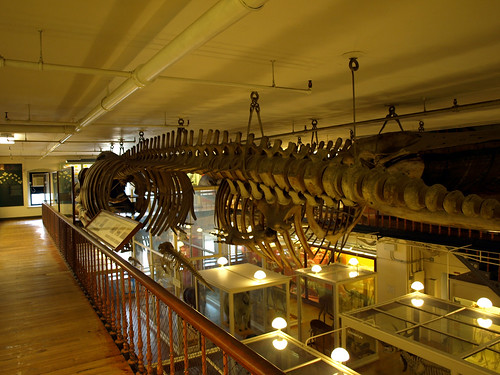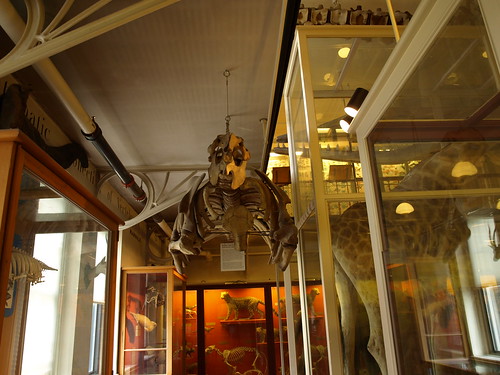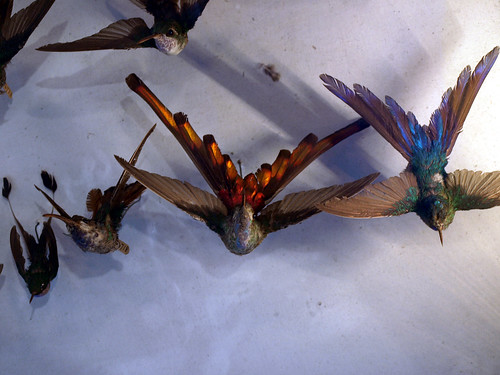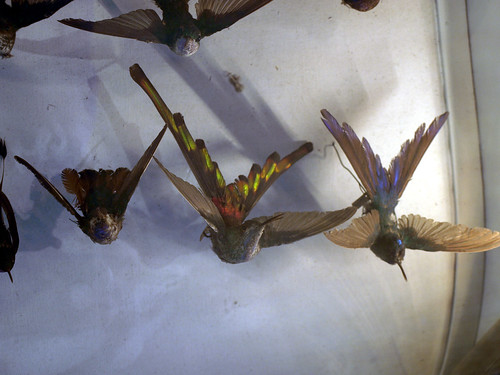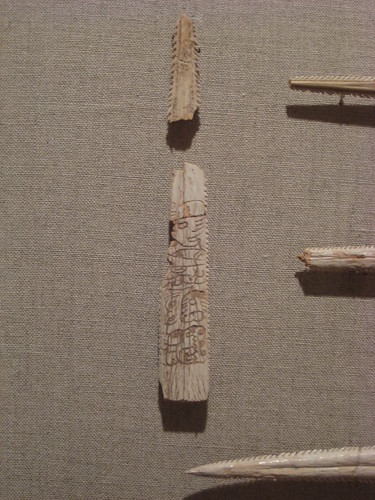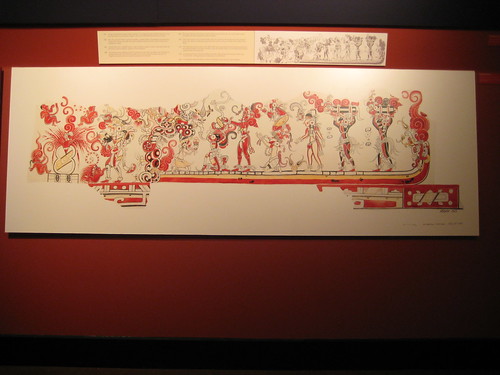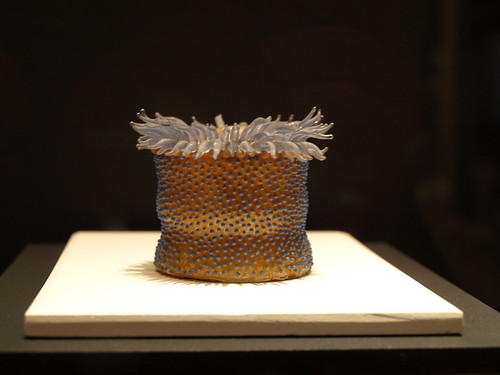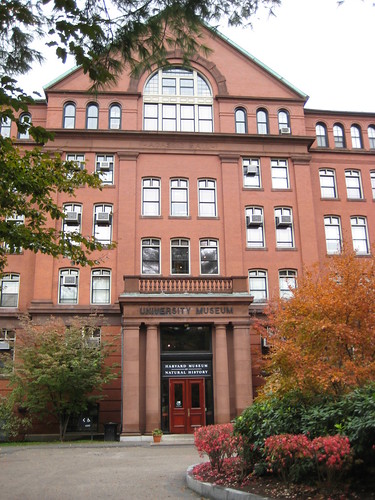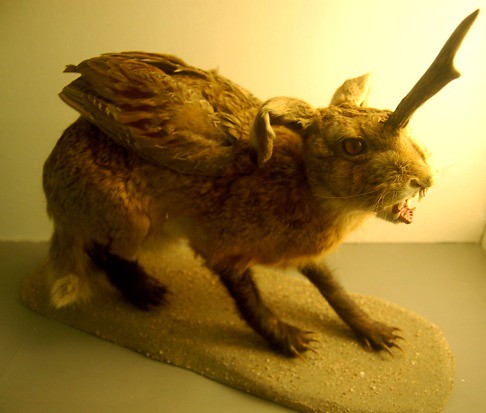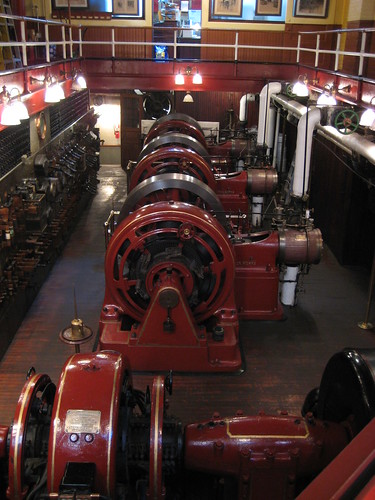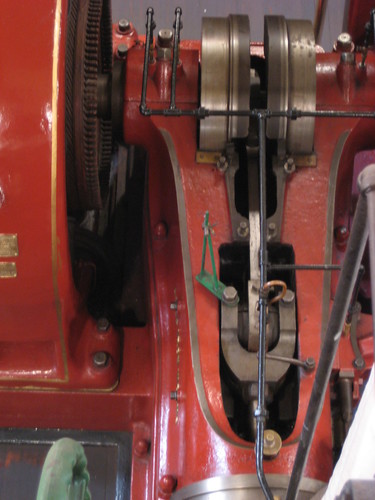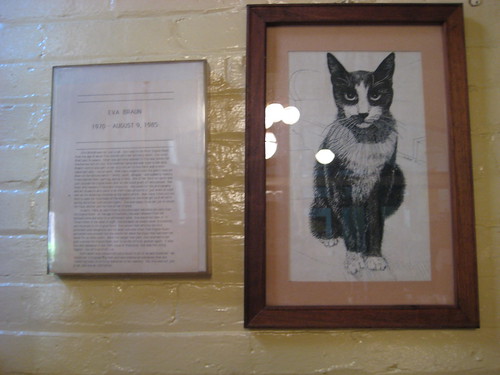A recent post on the always excellent BLDGBLOG got me doing a little thinking. First, a long quote from the post:
I have to register my fascination again, however, with the idea that zoos actually represent a kind of spatial hieroglyphics through which humans communicate – or, more accurately, miscommunicate �– with other species.
That is, zoos are decoy environments that refer to absent landscapes elsewhere. If this act of reference is read, or interpreted correctly, by the non-human species for whom the landscape has been constructed, then you have a successful zoo. One could perhaps even argue here that there is a grammar – even a deep structure – to the landscape architecture of zoos.
Zoos, in this way of thinking, are at least partially subject to a rhetorical analysis: do they express what they are intended to communicate – and how has this meaning been produced?
Landscape architecture becomes an act not just of stylized geography, or aesthetically shaped terrain, but of communication across species lines.Of course, this can also be inverted: are these landscapes really meant to be read, understood, and interpreted by what we broadly refer to as “animals,” or are these landscapes simply projections of our own inner fantasies of the wild? Or should I say The Wild?
While this latter scenario sounds much more likely to be the case – humans, like a broken cinema, always live inside their own projections – nonetheless, the non-human communicational possibilities of landscape architecture will continue to fascinate me.
Three observations – general, personal and tangential.
General. In the post-wunderkammer/boxes with iron bars era, zoos have tended to define their mission as a mix of conservation (breeding) and education (exhibits). The 2 pieces sometimes don’t align well; often species needing conservation may not be charismatic (lots of LBJs – little brown jobs – need help). Further – when trying to educate the public there’s the animal itself, its behavior (especially in groups) and its habitat. If you want to tie education back to conservation, informing people about the biome is critical – to paraphrase the real estate saw, it’s habitat, habitat, habitat. An accurate, naturalistic setting may not be what you want, though, if breeding is your goal. Keeping track of rations, who’s doing what to who, and controlling environmental parameters (I’m thinking of herps that need to be put in a rain chamber to kick off breeding, for example) may be facilitated by a less complicated – though still far from a white plastic box – enclosure. Two audiences for the landscape architect’s communication – the viewing public and the animals inhabiting the landscape. Two measures of success – does the public come away with a better understanding of how/where the animal lives (and pressures on same) and does the animal display the same range of behaviors it would in it’s home range and does it breed? It’s my impression that zoos deal with this tension by doing a lot of the breeding work off-stage where they can manipulate stimuli without having to worry about a bunch of follicly challenged primates tapping on the glass.
Personal. I keep and breed poison dart frogs. There are many reasons I enjoy them – behavior (parental care, especially), physical beauty, size (manageable); one ties in to this post – the opportunity to do some world-building. Dendrobatids and naturalistic vivaria go together like, I dunno, lobster and butter. You don’t need a planted tank to be successful with darts – lots of leaf litter, some film cannisters or a petri dish – depending on the species’ egg deposition preference – and a mister bottle will usually do the trick. It’s almost the reverse case – you can put PDFs in a planted tank and rather than destroying the plants and trashing the joint, they will settle in and, if you’ve done your world building well, thrive. To circle back to Geoff’s communication point again – I guess I’m trying to communicate with the frogs in an unnecessarily complicated way, with the complexity being for my – the observer’s – benefit.
Tangential. I’m reminded of one of the lines of polarity in fly (as in fly fishing) design: impressionistic vs. realistic. At the extreme, realistic flies don’t serve an aquatic audience at all – they exist solely for the human observer. At the other end of the scale, impressionistic flies are all about trying to guess what attributes stimulate a take. Shape, size, material, etc, are all chosen as a best guess at what makes a hatching caddis look like food to a fish. It’s about listening to what the trout said . An anecdote (OK, it’s a damn fish story) – I was out at dawn once right around the June full moon fishing for stripers. There were fish all around me, but I couldn’t buy a strike. After flailing the water for a while I decided to stop and watch for a bit – I quickly realized that the bass were eating small seaworms that were swimming around near the surface of the water. I went through my fly box and cut the tail off the smallest, sparsest Deceiver I had, making it even shorter and wispier. I cast the fly out and let it drift with the current, twitching it occasionally. I hooked a fish almost immediately. I guess the first step in communication with another critter is listening…
. An anecdote (OK, it’s a damn fish story) – I was out at dawn once right around the June full moon fishing for stripers. There were fish all around me, but I couldn’t buy a strike. After flailing the water for a while I decided to stop and watch for a bit – I quickly realized that the bass were eating small seaworms that were swimming around near the surface of the water. I went through my fly box and cut the tail off the smallest, sparsest Deceiver I had, making it even shorter and wispier. I cast the fly out and let it drift with the current, twitching it occasionally. I hooked a fish almost immediately. I guess the first step in communication with another critter is listening…



